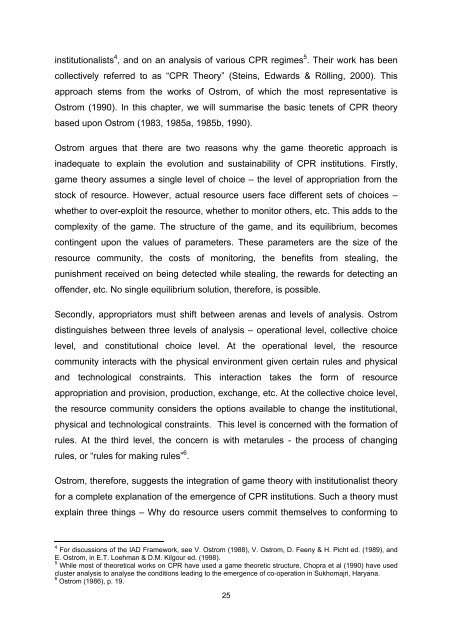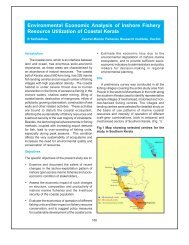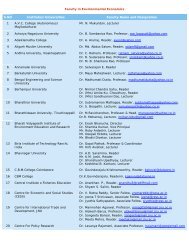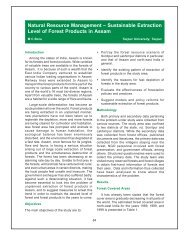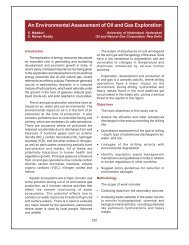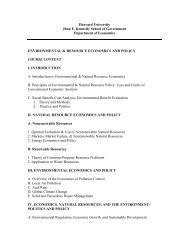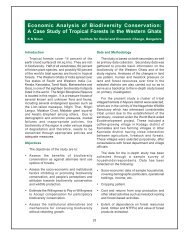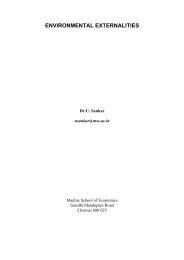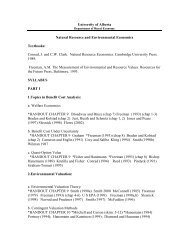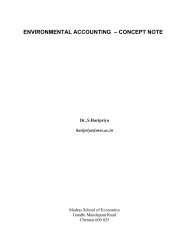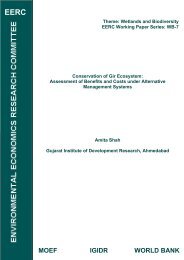PDF 3.08 MB
PDF 3.08 MB
PDF 3.08 MB
Create successful ePaper yourself
Turn your PDF publications into a flip-book with our unique Google optimized e-Paper software.
institutionalists 4 , and on an analysis of various CPR regimes 5 . Their work has been<br />
collectively referred to as “CPR Theory” (Steins, Edwards & Rölling, 2000). This<br />
approach stems from the works of Ostrom, of which the most representative is<br />
Ostrom (1990). In this chapter, we will summarise the basic tenets of CPR theory<br />
based upon Ostrom (1983, 1985a, 1985b, 1990).<br />
Ostrom argues that there are two reasons why the game theoretic approach is<br />
inadequate to explain the evolution and sustainability of CPR institutions. Firstly,<br />
game theory assumes a single level of choice – the level of appropriation from the<br />
stock of resource. However, actual resource users face different sets of choices –<br />
whether to over-exploit the resource, whether to monitor others, etc. This adds to the<br />
complexity of the game. The structure of the game, and its equilibrium, becomes<br />
contingent upon the values of parameters. These parameters are the size of the<br />
resource community, the costs of monitoring, the benefits from stealing, the<br />
punishment received on being detected while stealing, the rewards for detecting an<br />
offender, etc. No single equilibrium solution, therefore, is possible.<br />
Secondly, appropriators must shift between arenas and levels of analysis. Ostrom<br />
distinguishes between three levels of analysis – operational level, collective choice<br />
level, and constitutional choice level. At the operational level, the resource<br />
community interacts with the physical environment given certain rules and physical<br />
and technological constraints. This interaction takes the form of resource<br />
appropriation and provision, production, exchange, etc. At the collective choice level,<br />
the resource community considers the options available to change the institutional,<br />
physical and technological constraints. This level is concerned with the formation of<br />
rules. At the third level, the concern is with metarules - the process of changing<br />
rules, or “rules for making rules” 6 .<br />
Ostrom, therefore, suggests the integration of game theory with institutionalist theory<br />
for a complete explanation of the emergence of CPR institutions. Such a theory must<br />
explain three things – Why do resource users commit themselves to conforming to<br />
4 For discussions of the IAD Framework, see V. Ostrom (1988), V. Ostrom, D. Feeny & H. Picht ed. (1989), and<br />
E. Ostrom, in E.T. Loehman & D.M. Kilgour ed. (1998).<br />
5 While most of theoretical works on CPR have used a game theoretic structure, Chopra et al (1990) have used<br />
cluster analysis to analyse the conditions leading to the emergence of co-operation in Sukhomajri, Haryana.<br />
6 Ostrom (1986), p. 19.<br />
25


